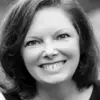Paying for call coverage isn’t always an option and, even when it is, sometimes it’s more bandage than cure. The priority should be addressing long-term physician satisfaction.
True story
“There just isn’t enough money,” Dr. B said.
I was starting to sweat. Despite my chief’s objections, I’d just proposed doubling the amount we’d been paying physicians who took shifts beyond their required seven. My offer had been flatly rejected.
“What do you mean?” I asked. “It’s very generous.” I was trying to keep the desperation out of my voice, but it was impossible. We had to find a way to get more faculty into the call rotation.
“I appreciate the thought,” Dr. B said. “I really do, but it’s not about the money. I just can’t function when I’m that tired. It’s difficult to be up all night and then see patients in clinic or hospital all day. I’m truly worried I’m not making the best decisions. Sometimes I delay non-emergent treatment because I’m just too flippin’ tired. That’s not what’s best for our patients or the hospital.
“It’s gotten to the point where it doesn’t feel safe,” he continued. “What if a patient gets hurt? Or one of us? A couple of weeks ago, I caught myself drifting off when I was driving home. If it weren’t for the rumble strip on the shoulder, I would’ve been in a ditch.”
The negotiation was over, at least for now. Dr. B’s safety concerns were genuine. He wasn’t angling for more money or benefits. In fact, he’d gone from refusing to take more shifts to hinting that he also wanted to go home post-call.
Real response
Understanding what physicians want: Call coverage isn’t a new problem, but it’s becoming an increasingly difficult one to solve because clinicians’ expectations have changed.
Hours before Dr. B, a member of the so-called millennial generation, turned down my offer to pay double for taking call, the chief also had pushed back against the idea, though for different reasons. “In my day, it was a badge of honor, a rite of passage, to take call!” he insisted. “You want to pay them more? Taking call is part of their base comp!”
The two reactions illustrate the dilemma we were facing. We’d tried to incentivize behavior with money, which tended to work well with previous generations, but cultural shifts no longer make financial inducements a preferred tradeoff. Many (not all) millennials will choose time for their family, friends and other interests over a pay increase.
Meanwhile, the division chief had lost patience with the call situation. Never mind, he’s pushing 70 and hasn’t taken call in a decade. He expects the “young guys” to step up like he and his partners did years ago. Relying on physician leadership to solve the problem wasn’t going to work. We needed a solution that would bridge a considerable gap between physicians with very different attitudes about work–life balance.
Aiming for equitable distribution: As a stopgap solution, we increased the clinic requirement for the “senior” faculty. Th ey were asked to cover more non-call responsibilities, which would allow post-call faculty to sign off at noon.
It didn’t go over well. The younger faculty still felt overburdened, and the senior physicians still thought their status should earn them relief from what they saw as extra duties. In short, the short-term fix wasn’t sustainable. We needed to reexamine the problem through the lenses of two groups: millennials, who tend not to value hierarchy and entitlements, and traditionalists, who do. This “solution” was a bust, as both groups felt dumped on.
Achieving long-term sustainability: After both plan A (more compensation) and plan B (shifting responsibilities) failed, we moved on and recruited two faculty. We made it known that our priority was reducing call burden. Per-physician wRVUs dropped, but both documentation and quality improved across the group. We attribute the improvements to having physicians who are less fatigued with more energy for detailing notes.
Much to my surprise, the cost of the new hires didn’t hurt our budget. Eliminating the need for additional shift pay made the return on investment break even. But the real value came from retaining current faculty. By getting them the help they said they needed, we’d demonstrated that we were listening and value them.
Debrief
There are no quick fixes with call coverage. It took more than 18 months of trying an interim plan and compromising to get to a sustainable solution. If we had it to do again, we wouldn’t have even offered to compensate for taking additional call. We understand now that our physicians didn’t perceive it as a gain when it was offered but, when we staffed up and no longer paid for call, they saw it as a loss. In both cases, it occupied the loss column. We’ll factor in that lesson during future negotiations.
There was, however, an upside to the lengthy and often painful process: We realized, with hindsight, that though our attempt at relieving call burden by adjusting faculty schedules and responsibilities had most certainly failed, it also had cleared the way for a better outcome. The interim effort, where we shifted responsibilities, demonstrated to our faculty that we were sincere in our desire to achieve a workable solution and gave us time to recruit additional faculty while analyzing the schedule—all of which had positive outcomes. Today, both our traditionalist and millennial physicians say the call schedule is fair and not overly burdensome, and our patients are receiving their care from rested clinicians.
Editor’s Note: Real Talk is a recurring feature in Cardiovascular Business, with stories reflecting some of the uncomfortable, look-the-other-way realities of cardiovascular medicine and practice. It is told from an anonymous perspective to encourage honesty and objectivity, without sugarcoating. If you have a story, experience or lesson to share, email me at kbdavid@cardiovascularbusiness.com.
